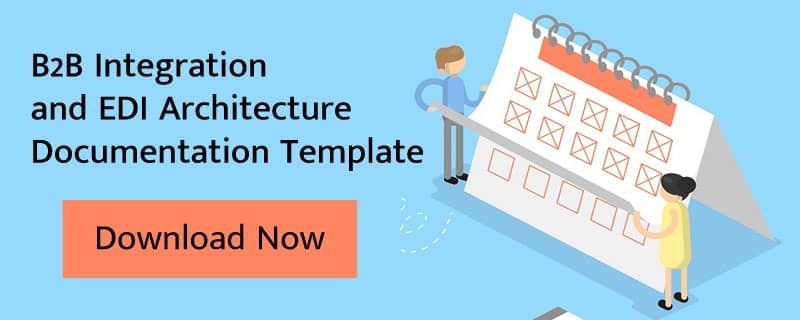
While the labor market remains tight, with more job openings than seekers, rising inflation, soaring producer prices and a return to pre-pandemic unemployment levels are all good reasons for you to dust off and polish up that resume.
Here are some tips from Remedi to make your resume makeover easy and effective and get you ready for the next chapter of your career.
With more industries being impacted every day, expect increased competition for the positions you're applying for. Other job seekers will be eager to land the job and invest considerable time preparing their resumes to make the best possible impression.
At the same, this can be an ideal opportunity to take a fresh look at your resume to make sure yours is the one that stands out from the rest of the crowd.
EDI and B2B Resume Tips
There are several areas to focus on when revising your curriculum vitae. You want to be sure the document stands out from the pack, and that means making it visually appealing, concise, and relevant to your potential employer. Here’s a breakdown of key resume elements:
Length – Trying to edit 15 or 20 years of experience down to a single-page summary is the first mistake a lot of people make. A good rule of thumb for EDI professionals is to use about one page for every 6 to 7 years of experience.
Bullets or Paragraphs – If you are in a technical role, or directly managing a small group of technical professionals, then bullet points tend to be the most effective way to summarize your accomplishments. A narrative style is better suited for purely functional or senior management roles.
Summary Statement or Objective Statement? - Short answer – doesn’t matter. What does matter is that you tell every potential employer what you bring to the table and how you want to benefit their organization. If your Summary or Objective statement doesn’t accomplish those two things, it’s time for an edit.
Metrics – When I scan over a resume (did you notice the word scan versus “read”?) the first thing I’m looking for is numbers. The greatest sin among most resume writers is a failure to provide metrics that communicate context and accomplishments.
- Context Metrics communicate your experience operating in large, complex environments, or smaller environments requiring you to multi-task, change gears, and wear a lot of different hats.
- Accomplishment Metrics communicate to the hiring manager your impact and performance through quantifiable results.
Most resumes get about 30 seconds of review (“scanning”) before the reader decides whether or not to invest more time. Good metrics are the speed bumps you need to slow readers down and make them want to hear more of what you have to say, hopefully leading to an interview.
Display your Accomplishments Proudly
You’ve worked hard to get where you are, so make sure your achievements are easily visible in your resume. You don’t want to bury all that you’ve done in dense, dull ‘word walls’ that make readers’ eyes glaze over.
What you do want are succinct, readable sentences that quickly tell your potential employer what you did and how it helped your past organizations. More on this below.
The Big Four – Here are four terrific areas to display your best accomplishments using metrics. Demonstrate where your work has created.
- An increase in revenue – Not everyone will have something to show here, but most who do tend to overlook it.
- An increase in efficiency - How did you improve processes, workflow, uptime, etc... Think percentages here.
- A decrease in cost – If you didn’t pay for yourself at your last company by increasing revenue, did you by decreasing costs? If so, say so.
- A decrease in risk – No doubt the hardest to quantify, but if you were responsible for any risk-based initiatives, don’t keep it a secret and list only numbers that you can defend.
When describing your contribution, here are some tips to help you better quantify your experience. It's called the S.T.A.R. method. S.T.A.R. stands for:
- Situation - Describe the situation that existed prior to your arrival, or which led to the need for your arrival
- Tasks –Explain what needed to be accomplished. You may not have performed all of the tasks required but describing them provides context.
- Actions – What were the specific actions that you took to turn things around in order to move the company or department in the right direction?
- Result – Define the return on investment (ROI) you provided the company by your accomplishments. Remember to use metrics and avoid statements that lack a benefit to the company. Quantify the benefit of your action, not just the action itself.
Make sure to highlight your accomplishments. Avoid “we” statements. Remember, there is no “I” in team. Team talk is ok to demonstrate you are a team player but not when highlighting your own accomplishments.
Write that Cover Letter
The first document a hiring manager sees when they look at your application is your cover letter. It sets the stage for the resume that follows it and should leave the reader wanting to learn more. For maximum impact, the cover letter should contain three things: information, personality, and customization.
EDI Resume Do's and Don'ts
Here are some other quick do’s and don’ts for resume preparation
DO
- Spend more time and space on your most recent role and progressively less on each prior role.
- Convey your responsibilities and accomplishments in the present tense, instead of using past tense verbiage.
- List your technology skills in the order of your experience level. This most likely puts more recent and in-demand skills at the top, and older technology further down the list.
- Examine your resume for any relevant but missing keywords that might be used during an online resume search by a prospective employer.
DON'T
- Avoid referring to yourself in third person form and never include a picture of any kind on your resume.
- Don’t list extraneous personal information such as height, weight, health, marital status, irrelevant hobbies, or graduation dates that are more than 10-12 years old.
- Avoid listing every technology on the planet. Too many people list older technologies that they only had exposure to in college and haven’t seen since.
- Most importantly never include anything that is false or that could be considered misleading, or difficult to support.
There is more to writing a great resume than can be listed here, but hopefully, this provides a starting point to put your best foot forward. Maybe your next employer will be glad they stopped scanning, started reading, and decided to select you for the interview.
Find the Right Employer
Are you a technology professional looking for an integration, EDI or MFT job? Search Remedi’s extensive job board or submit your resume to us. We can help you land a great fit.
Remedi specialists can also help if you’re an employer seeking top EDI consulting or B2B integration talent. See available professionals or talk to one of our experts today.
Don't miss an opportunity to do what you love and be who you are.







